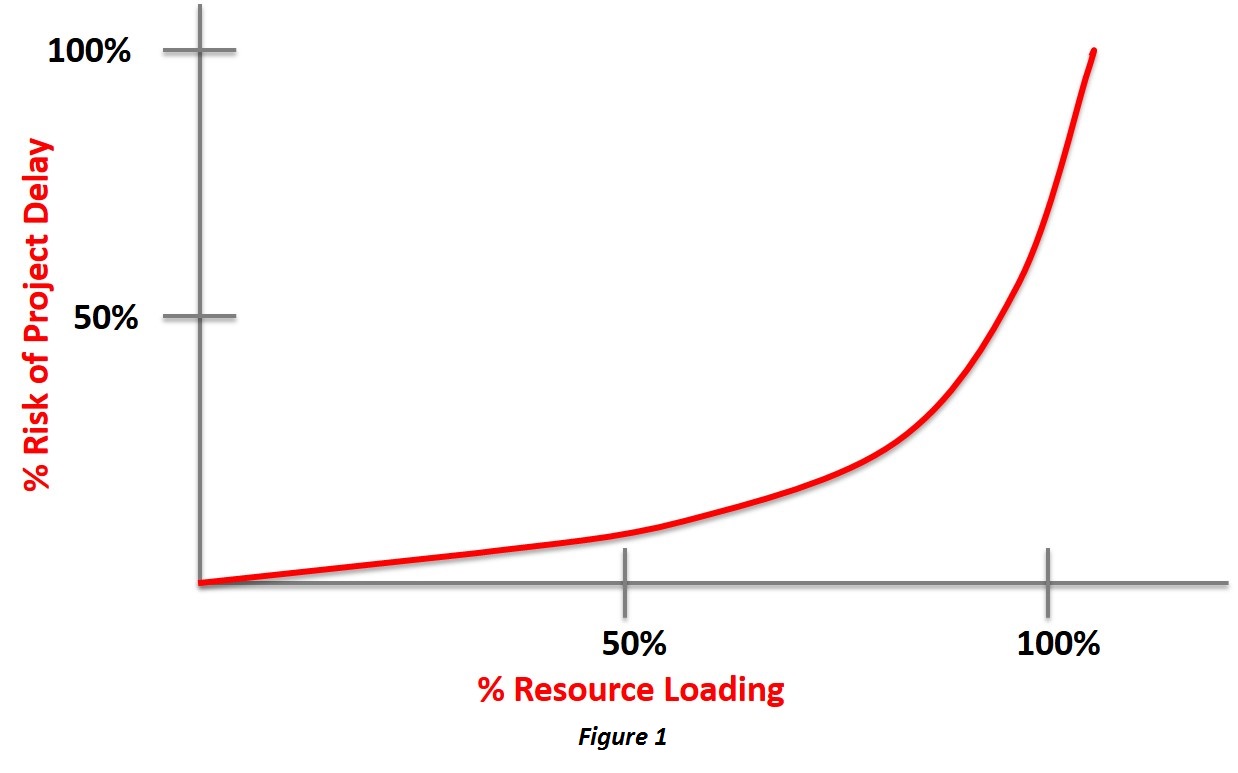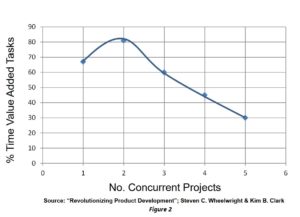 Ask senior executives at manufacturing firms what their biggest challenge is managing new product innovation and you might hear answers such as lack of creative thinking, development teams need to work harder, or maybe that the organization does not have the right skill sets. The truth might surprise you: consistently year-in and year-out, the single biggest pain point in managing product innovation is too many projects for available development resources.
Ask senior executives at manufacturing firms what their biggest challenge is managing new product innovation and you might hear answers such as lack of creative thinking, development teams need to work harder, or maybe that the organization does not have the right skill sets. The truth might surprise you: consistently year-in and year-out, the single biggest pain point in managing product innovation is too many projects for available development resources.
Survey data backs this up (1). In a recent survey, 61% say that too many projects for the available resources was the number one “pain point” in managing a project portfolio. That response has remained consistent for several years. A related statistic indicated that only about 25% of those surveyed felt their organization was effective at resource allocation planning. The difficulty stems from the fact that every project is different, projects tend to be susceptible to scope creep, and development often takes longer than anticipated.
And what about the risk to the organization as a result of overloading resources? In the same survey cited above, the top five risks include late projects, inability to innovate fast enough, increased project costs, missed business opportunities and dissatisfied customers. The top two risks on this list speak to the challenge of reducing time-to-market. In today’s hyper-competitive global economy, getting to market faster is an imperative.
Let’s look at five key ways to address this vexing innovation management problem.
Implement a Resource Allocation Process
Do you know how your development resources are being utilized now and into the future? In my experience, companies either operate blindly because they have absolutely no process in place or they implement very heavy-handed processes with too much granularity. I lean toward the use of simple processes and tools if no process is currently implemented (2). There are specialized software tools available, but make sure they are user-friendly or they will not be worth the cost to implement.
The Danger of Loading at 100% of Capacity
The focus in most organizations is “efficiency”. That translates to senior management insisting that development resources be utilized fully. Slack in the system is be avoided if you value your career. There is just one problem with this mentality. In most organizations, there are development resource dependencies. What happens on one project affects other projects. Figure 1 illustrates the point, though the exact shape of this curve will vary by company. The new product development process is a complex system, and as you approach 100% loading, in my experience you have a 100% chance that many or all projects will be delayed (3).

Choosing the Right Projects
Since development resources are valuable but scarce, the ability to pick the right projects becomes even more important for long-term innovation success. This so-called “fuzzy front end” is a challenge for even the most successful serial innovators. An effective project portfolio management process will help you select the right projects in the first place (4).
Multi-tasking is Not Your Friend
The mantra in every organization is “doing more with less”. In new product development, that often means key 
development resources work on many projects simultaneously. This is especially true where there might be a single resource with a specialized skill set who invariably ends up on the critical path of every project. Asking your key development resources to work on more than about two projects simultaneously not only reduces their effectiveness, as shown in Figure 2, but increases project dependencies.
Avoid Scope Creep
A final key issue is to resist the temptation for the scope of projects to expand. Scope creep will likely delay that specific project, and impact all projects due to resource dependencies. The first way to combat scope creep is to fully define new products before development starts (5). You are better served spending more time up front fully defining a new product, rather than jumping headlong into development. Second, senior management must provide organization discipline to insure stable definition over time.
In summary, while many factors lead to long-term innovation success, the number one problem in managing new product development is too many projects given the available resources. The risk to the organization is multi-faceted but in particular, new products will be late to market dramatically impacting business performance, increasing time-to-market and reducing competitiveness.
Managing innovation requires a robust resource allocation planning process. If no process is in place, simple tools can be used. As with other processes, the planning and dialog involved is more important than the elegance and complexity of the tool used. Second, realize that there is a penalty to pay if you attempt to load the development resource pool at 100%. Next, choosing the right projects to begin with is essential. And finally, resisting the temptation of having critical resources multi-task across many projects and avoiding scope creep support long-term success.
Notes:
- See these surveys from Planview: Fourth Product Portfolio Management Benchmark Study, Capacity Planning Fuels Innovation Speed.
- For assistance in evaluating your innovation management practices consider Your Innovation Coach online coaching service.
- For an interesting example of this same issue but related to another type of complex system, see: Fairly, Peter. 2016. Averting the Blackout of the Century. March 2016: 44-51.
- See for example these articles: The Importance of a Balanced Project Portfolio, Critical Aspects of Project Portfolio Management in NPD Success
- See for example these articles: The Role of Product Definition in Innovation Success – Part 1 and Part 2
 Bio
Bio
Jeff Groh is President of New Product Visions located in Flat Rock, NC. New Product Visions helps companies drive revenue and earnings growth by improving their innovation management practices. We focus on processes, organization, management engagement and culture. Services include consulting, Innovation Coach™ Workshops, Your Innovation Coach online coaching service and software enablers. Mr. Groh spent 30+ years in industry in a variety of management roles in sales, manufacturing and new product development prior to starting New Product Visions. For additional information or to join our mailing list, contact us. Available for select speaking engagements.


Be the first to comment on "The Biggest Challenge in Product Innovation May Surprise You"